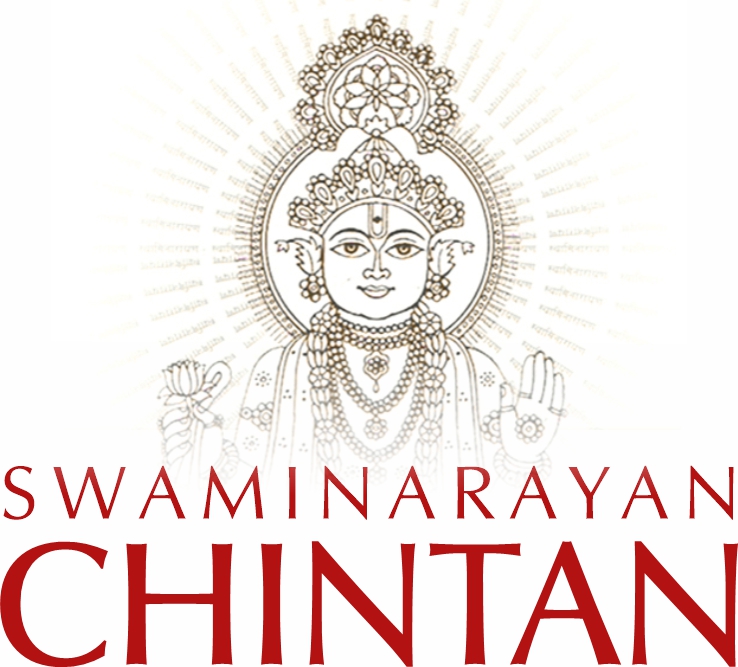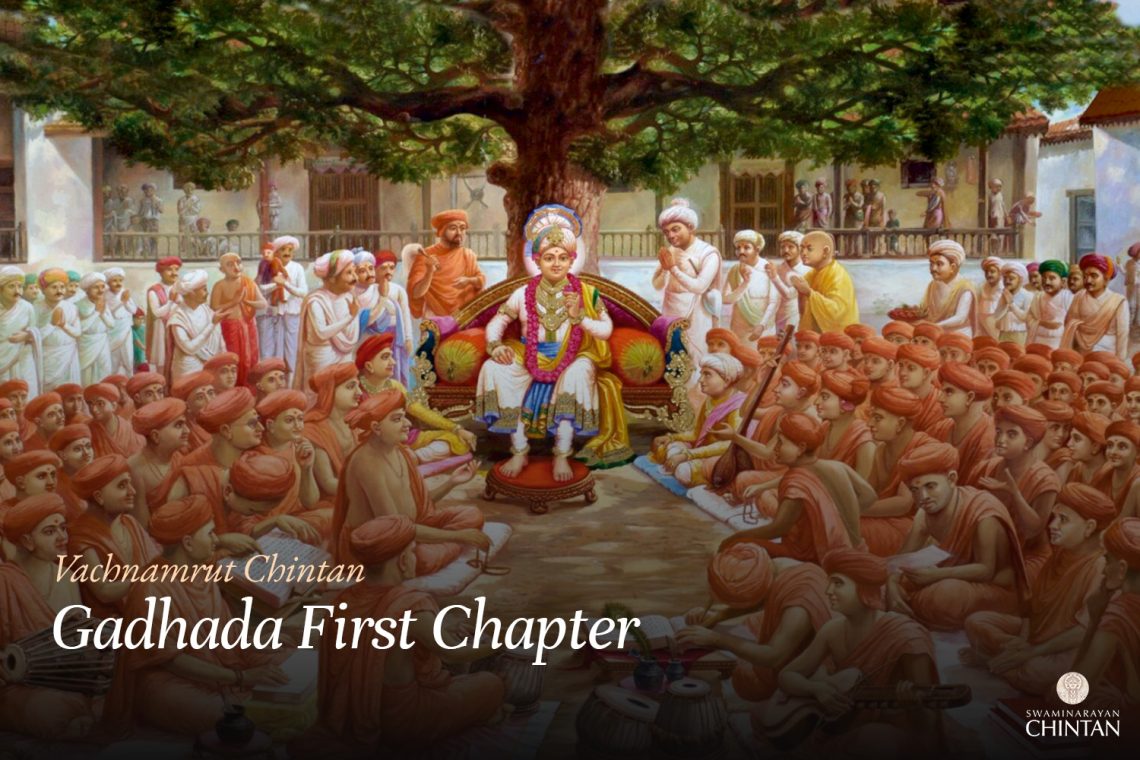Central Insights:
Clarification about the three kinds of Vairagya.
Key Points:
Worldly objects cannot control one who is not drawn toward them.
Explanation
विगतः रागः आसक्ति यस्मात् सः वैराग्यः । रंजयति इति रागः ।।
vigataḥ rāgaḥ āsakti yasmāt saḥ vairāgyaḥ | raṃjayati iti rāgaḥ ||
Things that make us happy create rag (attachment). Pleasure is created by attachment, not by the object itself. However, people fail to understand that the happiness they feel is illusory because it is fleeting. An object may be desirable for someone, but that same object may be unattractive to others.
For example,
- A mansion gives happiness to the owner alone but not necessarily to others.
- A father alone is happy to see his son, but others may not be pleased.
- If one is pleased to have the food of their liking, others might find the same to be unpleasant.
Thus, people derive pleasure from intense rags (desires). Vairagya (Non-attachment) is only attachment to God and not towards worldly matters. A complete lack of desires is not a true sign of non-attachment but lacking intense attraction towards worldly affairs and having an attraction towards God is non-attachment. In the scripture Shikshapatri, Vairagya is mentioned as
वैराग्यं ज्ञेयमप्रीतिः श्रीकृष्णेतर वस्तुषु
vairāgyaṃ jñeyamaprītiḥ śrīkṛṣṇetara vastuṣu
Vairagya means non-attachment to everything except God.
In this chapter, the three types of Vairagya have been highlighted
a) Uttam Vairagya (Highest or Best),
b) Madhyam Vairagya (Moderate or Medium),
c) Kanishth Vairagya (Lowest).
Nishkulānand Swamiji has mentioned two types of Vairagya
a) Brahad Vairagya (Supreme),
b) Samanya Vairagya (Ordinary).
Yogshashtra describes four stages of Vairagya
a) Yatmān,
b) Vytirek,
c) Ekendriya,
d) Vashikār.
In Fact, there is only one form of Vairagya. The true form of Vairagya is to detach from the materialistic world and attach to God. The types of vairāgya mentioned above are the stages involved in the path of evolution. From above, the vairāgya named Uttam, Vashikar or Brahad are true vairāgya. The other classifications mentioned above, like Madhyam Vairagya (moderate) and Kanishth (lowest Vairagya), are milestones before attaining Uttam Vairagya. For illustration, a farmer sows wheat seeds in the field. As the plant grows, the product will not change. When the wheat is plucked and roasted, the product will still be defined as a wheat product.
In the same manner, there are different stages before attaining Uttam Vairagya. The result is achieved by adding water, mixing, and baking. Once it’s ready, that is when the flavour of the bread is toasted. If it is uprooted in-between stages producing bread is not possible. Similarly, a person needs to move through the different stages of Vairagya to attain the ultimate stage.
In Yog sutras, there are four divisions of Vairagya:
- Yatman: The desire to part from the materialistic world and its objects through Satsaṅg, Scriptures or other mediums is called yatman vairāgya.
- Vyatirek: The freedom from attachment is not easily possible merely by resolving to leave them. “This world is not something you can just leave”. Some worldly objects can be easily removed with minimal effort, but others would need a lot of effort. The worldly objects maintain such a tight grip that they would not leave the individual so easily. When material pleasure is discarded in the path of God, it is called Vyatirek. Vyatirek means to separate. Internally when the desire for material pleasures is discarded up to some extent it is called Vyatirek.
- Ekendriya: when a devotee sheds off physical worldly objects with a lot of effort even though he still has desires and an attachment, at this stage, the desire and attachment for worldly objects are still present in the mind. This condition is called Ekendriya vairāgya because the mind is a field of worldly desires.
Bhagavad-Gita describes this as
विषया विनिवर्तन्ते निराहारस्य देहिनः रस वर्जन् ।
viṣayā vinivartante nirāhārasya dehinaḥ rasa varjan |
When desires fester internally in mind, it is called Akendriya Vairagya.
- Vashikār: When materialistic desires are completely removed from the mind, the senses and materialistic objects also come under control. This is called Vashikār Vairagya.
Maharaj narrated the same version in three parts and identified the three types of Vairagya. Santos refer to butter to explain Vairagya. Yoghurt is created when milk is processed, and churning yoghurt will create Buttermilk and Butter. Butter is the essence of milk and yoghurt. Butter is heavier than milk, yet it’s not the same here. Butter does not sink in buttermilk. Buttermilk cannot make butter shrink. They both stay apart all the time. Yet it is important to know that separating butter apart from buttermilk will start its decay. Similarly, a devotee with vairāgya though living in this materialistic world, this world cannot shrink him the same as butter and buttermilk. The world is compared to buttermilk. With a proper procedure, it’s necessary to extract butter from it. Even if milk is not processed, it will start to decay. “Rahiman bigde dudh ko mathe na makhan hoy.” Nothing is achieved from it. Similarly, human life would be ruined without Vairagya.
Hence some devotees have classified Vairagya in three forms.
- Sadharan vairāgya (Ordinary vairāgya) Renouncing impure or prohibited things
- Madhyam Vairagya (Moderate vairāgya) Renouncing prohibited and also non-prohibited materials which are more than necessary.
- Uttam Vairagya (Heigest Vairagya) Renouncing everything, interrupting devotion to God.
Tyāg (Renunciation) and Vairagya (detachment) seem to be similar but have many differences, and it’s essential to know these differences:
| Tyāg (Renunciation) | Vairagya (Detachment) |
|---|---|
| It is the first step. | It is the next stage of renunciation. |
| It creates a conducive atmosphere to attain detachment. | It fulfils the strength required to renounce. |
| Renunciation may not eradicate materialistic attachment. | It uproots the materialistic attachment from the root. |
| More possibility of obstruction. | Least possibility of obstruction. |
| Possible in the life of ascetics/renunciates. | Possible in the life of householders and ascetics/renunciates both. |
| Tyāg is worshipped if it is with detachment. | Vairagya is worshipped by itself. |
| Renunciation clears the obstructions to reaching God. | Detachment helps to reach God. |
| If combined with detachment, it can liberate infinite souls. | Detachment without renunciation can benefit one’s self only. |
| It can also be nurtured by ego too. | It can be nurtured only by the bhakti (Devotion) of God. |
| It can also be bred even by the desire for worldly things or other desires. | It eliminates materialistic aspirations and greed. |
| Its form is that of physical actions but not of feelings. | Thoughts of detachment are a form of discretion, but it creates a condition that eliminates Rāg (materialistic attachment). |
| It cannot survive among materialistic objects. | It can survive healthily even among materialistic objects, and conversely, it progresses among them. |
| To leave worldly objects is renunciation. | Worldly Objects being relieved automatically is detachment |
| There is a possibility after renunciation that the desire for that object can occur in another form | After being relieved, that desire can never occur |
| To leave physically is renunciation | To leave from the mind is detachment |
| It requires a lot of nourishment | Detachment nourishes us |
| It can be nurtured by following rules and regulations | It protects rules and regulations |
| There is every possibility of stubbornness in renunciation without understanding | It has the spontaneity of discretion |
| Ego is generated easily and quickly | Politeness is generated in detachment |
| It invariably takes refuge in Vairagya | Detachment does not necessarily need to take refuge of Renunciation |
| There is a great possibility of hypocrisy, artificiality, and self-esteem | Detachment is entirely devoid of artificiality and ego |
| It has an immense possibility of ego | It decreases self-pride |
| Normally, a renounced person considers other people inferior but cannot stay away from society. | A detached person usually distances himself, not considering others inferior but staying away from them as they block his way of pursuing life and consider them as hurdles. |
| It is an action, but there is a possibility of a reaction to it. | It is a state of mind and does not have any place for a reaction. |
| It is possible even for a non-devotee. | The high possibility is only in true devotees. |
| Lack of Vairagya is its hindrance. | Lack of devotion to God is its hindrance. |
| Renunciation is being nurtured by an urge of fame or expectation. | It is nurtured by renouncing contact with materialistic objects, controlling senses, and remembering the name of God and Satsaṅg. |
| Tyāg is an external practice. | Vairagya is an internal practice. |
Glossary
| Atmanishtha – Steadfastness in the realization of the soul The firm realization and understanding of the soul’s true nature, living beyond the influence of three kinds of body |
| Brahad Vairagya – Supreme Detachment Total surrender to God with no attachment toward worldly pleasures. |
| Ekendriya Vairagya – One-Sense Control Avoiding physical indulgence while still having mental attachment to material pleasures. |
| Kanishth Vairagya – Lowest Detachment Letting go of impure or prohibited things but still being influenced by worldy attractions. |
| Vairagya – Detachment From Everything Except God |
| Madhyam Vairagya – Moderate Detachment Renouncing unnecessary material things but still having some worldly involvement. |
| Sadharan Vairagya – Ordinary Detachment General non-attachment but not yet fully developed into complete nonattachment to worldy pleasures. |
| Samanya Vairagya – Ordinary Detachment General non-attachment but not yet fully developed into complete nonattachment to worldy pleasures. |
| Shikshapatri – Sacred Scripture of Swaminarayan sect written by Bhagwan Swaminarayan Himself containing Essence of all the Vedic Scriptures |
| Tyag – Renunciation Physically giving up materialistic objects but not necessarily attaining inner detachment |
| Uttam Vairagya – Highest Detachment Complete non-attachment to all materialistic pleasures and worldly attractions, focusing entirely on devotion to God |
| Vashikar Vairagya – Absolute Control Total elimination of desires and complete control over senses and mind. |
| Vyatirek Vairagya – Partial Detachment Overcoming some worldly attractions while still struggling with others |
| Yatman Vairagya – Initial Detachment The desire to separate from materialistic attachments, inspired by scriptures and Satsang. |

